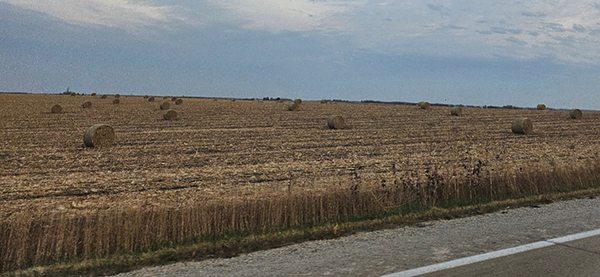Growing Beef Newsletter
November 2024, Volume 15, Issue 5
Fall Forage Considerations for Cattle Producers
Shelby Gruss, ISU extension forage specialist
Driving across the state, one thing is clear: we’re experiencing a dry spell. Streams and ponds are low, cover crop growth is minimal, and pastures show signs of wear. Recent rainfall will undoubtedly help as we head into winter, but many pastures still need rest. Overgrazing in the fall can lead to detrimental effects in the spring, including a decline in desirable pasture species and an increase in weeds. Additionally, overgrazed, thin pasture stands are more vulnerable to soil erosion and reduced water infiltration - factors especially critical for water conservation in such dry conditions.
For our cool-season pastures, leaving a residual height of around 4 inches is essential to maintain productivity for the following year unless interseeding is planned. In cases where interseeding is anticipated, maintaining a sward height under 1 inch can be beneficial for successful establishment. Leaving a four-inch sward height helps ensure rapid green-up in spring and improves winter survival. Overgrazing can impact pasture health, species, and regrowth in the spring.
Late Fall Forage Considerations
Another observation that stood out while driving was the abundance of corn and soybeans across the state. This presents a significant opportunity for corn and soybean residue grazing, which can be an good forage resource. Corn stover, in particular, is relatively abundant, and managed grazing can help extend the forage supply without putting additional pressure on pastures that need recovery.
The majority of the nutritional value in corn stover lies in the grain, husk, and leaves. Stocking rates for corn stover grazing can be estimated using bushels of corn, with an approximate guideline of 8 lbs. live weight per bushel of corn removed from the field. The University of Nebraska–Lincoln (UNL) has developed a stover grazing calculator and mobile app to help determine precise stocking rates. Move cattle when about 50% of the husks and leaves are removed. Visual cues can be used to decide when to move cattle; limited grain, husk, and leaves indicate it’s time to rotate cattle. Avoid forcing them to eat stems and cobs. If more than 8-10 bushels of grain per acre remain, there’s a risk of bloat or even death in cattle. Therefore, estimating grain residue carefully and implementing appropriate grazing strategies are essential. For those not set up for grazing, baling corn residue is another viable option.

When grazing soybean residue, be aware that it is relatively low quality (TDN ~35-45%) and will require supplementation to meet a cow’s nutrient requirements. Soybean pods and stems offer lower energy, while beans are high in crude protein and fat. Beans can be included in the diet in moderation, but too much fat may compromise rumen health. Before turnout, clean up any spilled beans to prevent selective grazing, as cattle will consume beans first.

Finally, despite the dry fall, the wet spring helped rejuvenate hayfields across the state, resulting in high first-cutting yields. However, this situation is somewhat of a double-edged sword. Due to the wet conditions, much of the hay was delayed until early to mid-June, which led to a decline in forage quality, particularly for first-cut hay. Testing your hay is highly recommended to determine its quality. Try to sample by field, cutting, and collecting a representative sample when taking hay samples. Collecting a representative sample is very important to read forage quality accurately. A soil probe is recommended to collect samples. Collect samples from 15-20 representative bales and mix in a nonmetal bucket. This will help guide decisions on which cattle class it best suits and whether supplementation is necessary.
By carefully considering fall forage options, cattle producers can help ensure healthier pastures for this coming spring.
This monthly newsletter is free and provides timely information on topics that matter most to Iowa beef producers. You’re welcome to use information and articles from the newsletter - simply credit Iowa Beef Center.
Archived issues
